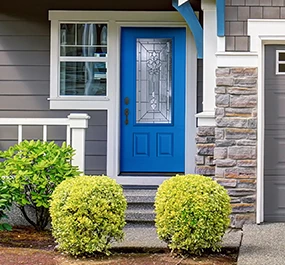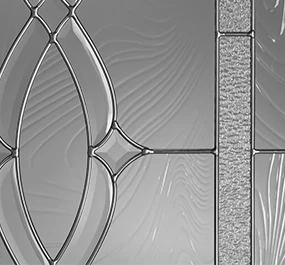For some, the prospect of remodeling their entire home may seem daunting. Time, energy, cost, impact on living arrangements—there’s no shortage of concerns to consider, but that doesn’t mean the results won’t be worth it. After all, there are reasons why so many people choose to remodel their current homes inside and out over opting to purchase new ones outright. So, how can you put yourself in position to succeed during your whole home remodel journey? It all begins with being prepared and formulating a plan.
Prioritizing Your Whole Home Renovation: Creating a Plan
Know Your Destination
If you’re doing a whole home remodel, where to start that process may not initially seem clear. Formulating a plan should be your first step when remodeling your home. Working towards a plan helps clear the fog from a large-scale project like whole home renovation and will allow you to make sound decisions from the start of the process. Plans are also important because they establish a goal and set a destination. Each of your decisions should be made in service of that goal.
While planning your project, there are a few key points to remember that may otherwise go overlooked. If you’re remodeling for a specific timeframe or event, the scope of your project may be restricted by those parameters. Start from your target and move backwards, keeping at least a few weeks open for any unforeseeable hurdles. You can help put those potential setbacks in focus by talking to others who have either had remodeling work done to their home by someone else or completed remodeling projects themselves. Their insight can be extremely valuable to your planning.
Keep Your Bases Covered
Once you have a goal in mind, it’s time to do the legwork that’ll help your project find success.
If you’re using a contractor, ask for proof of liability insurance, client references, and before-and-after photographs of previous jobs. Don’t just go with the first contractor, either. Seeing multiple examples of work and multiple ways professionals approach jobs can help you decide what you do or don’t want from a contractor—or from the remodel itself.
After you have a plan and you’ve either hired a professional or have the skill set to finish the job yourself, you should obtain the necessary paperwork and permits from local officials.
Budgeting and Financing Your Whole Remodel
One of the main factors that’ll impact every phase of your whole home remodel is the project budget.
There are three main ways to finance a project like this: pay for everything out of pocket, refinance your home, or apply for a construction loan or other type of loan and pay for the project over time. In order to figure out how much you’ll need for the remodel, create a spreadsheet that features a tab for each phase of your project.
Then, estimate preparatory costs like designing plans, performing inspections and obtaining the aforementioned permits. Once this is done, begin contacting vendors and researching the costs of materials. Put those estimates together and try to make changes to fit into your budget.
It's usually more budget friendly to remodel an existing house than build a new one—in fact, even the most extensive remodel can cost up to 50% less than purchasing a similarly-sized home. Those costs aren’t easy to estimate for everyone, as each home’s dimensions and materials are different, and each homeowner’s needs must be taken into consideration.
However, it’s fair to estimate that rooms with plumbing connections and all the necessary requirements surrounding them will cost approximately $100 to $250 per square foot to renovate. These spaces aren’t just built to keep plumbing safe and unseen, they’re also built so the sinks, showers, bathtubs and toilets being used are comfortable, accessible and able to successfully stop water from damaging other parts of the room. This means these rooms require more attention—sometimes more materials, too.
These rooms can be some of the most important rooms in your home. Kitchens and bathrooms are spaces where homeowners take care of basic human needs. At the least, they should be functional. Ideally, they’ll also be welcoming and help homeowners start their days off right. Preferences in kitchen furniture and storage, as well as bathroom amenities, will change the cost of your remodel.
Rooms without direct connections to plumbing, like bedrooms, living rooms, and game rooms, can be significantly less to remodel—about $10 to $25 per square foot. The price of both rooms with plumbing and rooms without goes up when a contractor is introduced to the project. Prices on older houses will be higher, too, since more will need to be replaced, work will be more delicate to complete, and materials matching the original work will be harder to come across. A lot of older homes also feature ornate, decorative features that may need to be replicated by a professional and will impact the budget.
Regardless of the type of home or the scope of the project, $100,000 should be enough to do some impactful work to any home. However, it may not be enough for a whole home remodel, given the large number of factors at play in a large-scale renovation’s final cost.
DIY vs Professional for Home Renovation
A whole home remodel is a tall task for any one person or group of people to take on, especially if they don’t perform this type of work on a regular basis and at a professional level. Sure, an experienced DIY project completionist can most likely wrap their head around most remodeling projects, but if there isn’t a lot of construction experience there to supplement that justified confidence, things could go awry.
In order to safely and successfully complete a whole home renovation, you’ll need to adhere to your local building, plumbing and electrical codes, while also making sure to preserve the integrity of any load-bearing walls. You’ll also need to put a number of different skills to use to complete every aspect of the remodel.
If you’re going the DIY route, you’ll still want to enlist the assistance of an architect. However, if you choose to go with a contractor, that isn’t to say the project is completely out of your hands. Contractors are usually okay with homeowners who tackle basic steps in a project, including demolition. This can help you take ownership of the remodel while also saving some money since you’ll have some of the work taken care of.
Getting Started with Whole Home Remodel: Exterior Projects
Some of your highest return on investment projects can be found outside the home, like working on roofing and siding or replacing garage doors.
Replacing a front door can be a relatively easy remodeling project that can be completed either independently or as part of a larger whole home renovation. If you decide your door needs to be replaced, you can install it yourself or choose to widen your front door’s frame and install an entirely new size of door.
No matter the project, be sure to time it correctly with the weather—you don’t want to be outside on a ladder when it starts to rain or snow.
Getting Started with Whole Home Remodel: Interior Projects
If you’re going for an interior whole home renovation and you aren’t sure in what order you should remodel your house, it’s recommended that the kitchen be the first room to receive a makeover. Remodeling a kitchen can increase your home’s value anywhere from 50% to 80%, making it another great way to add to your asking price—especially if you plan to go to market soon and your renovations are trendy and modern.
After the kitchen, consider costs when choosing your next renovation target. Bathrooms will have similar requirements and costs, but making modern upgrades to main relaxing and living spaces will help improve the quality of life for you and your family.
Whole Home Renovation Quick Tips and Best Practices
There are some precautions you can take to make sure remodeling on this scale won’t otherwise negatively impact your life.
Check with contractors to see if you should arrange alternate living arrangements for any or all parts of a remodel. Also be sure to pack up any valuables that sit in potential construction areas. Inside the home, create a sort-of home base kind of section where plans, tools, materials and other things integral to the remodel can be kept.
Finally, be sure you have a clear vision before a remodel begins. Spend time in a space and formulate an approach that makes it your own. Maximize space with unique storage and furniture options or impose your personality over all else. This is your remodel. Own it.
Renovating with Plastpro
One way you can own that remodel is by replacing your door with a sustainable option from fiberglass door manufacturer Plastpro. Fiberglass doors require less maintenance, withstand more punishment and trap heat better than their wooden and metal competitors. This gives them a longer lifespan and a larger impact on your home.
Once you have some idea of how you’d like to remodel your entryway or just replace your current door, find a Plastpro dealer who can walk you through the process and help you choose the right door for your space.



